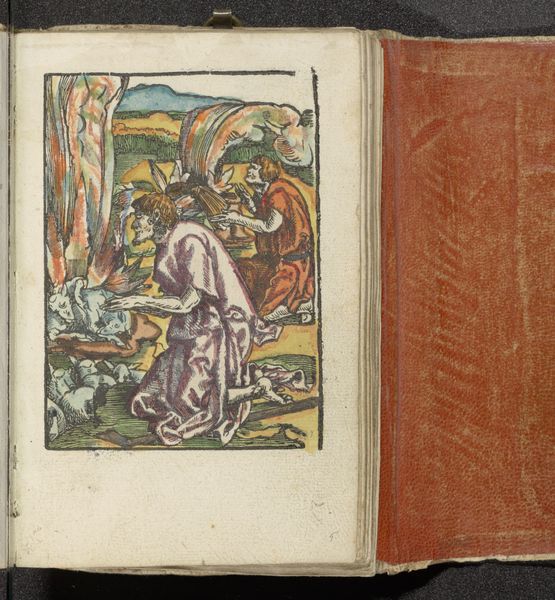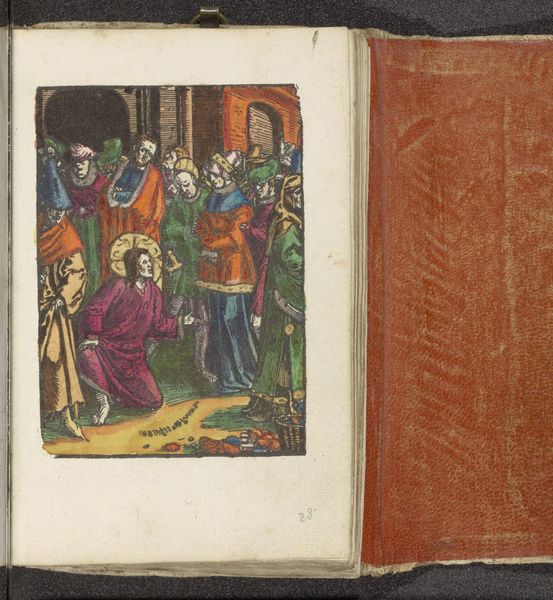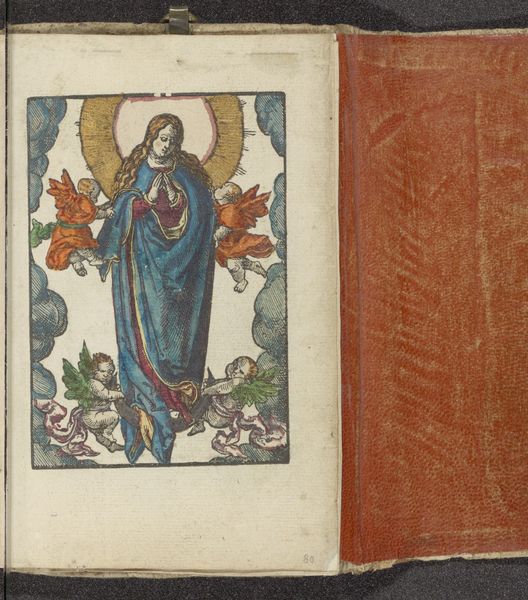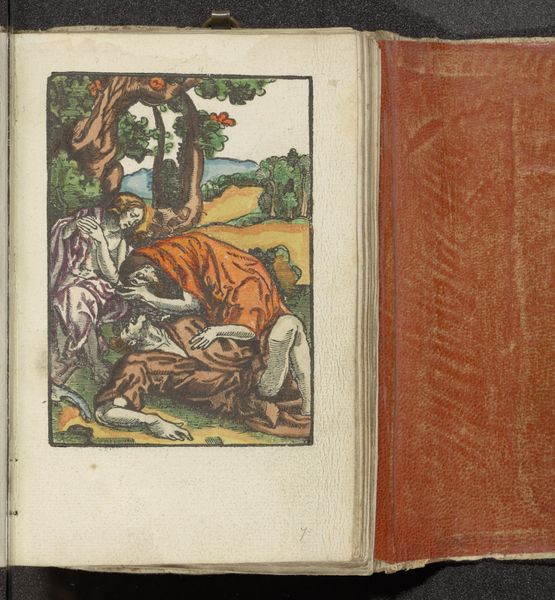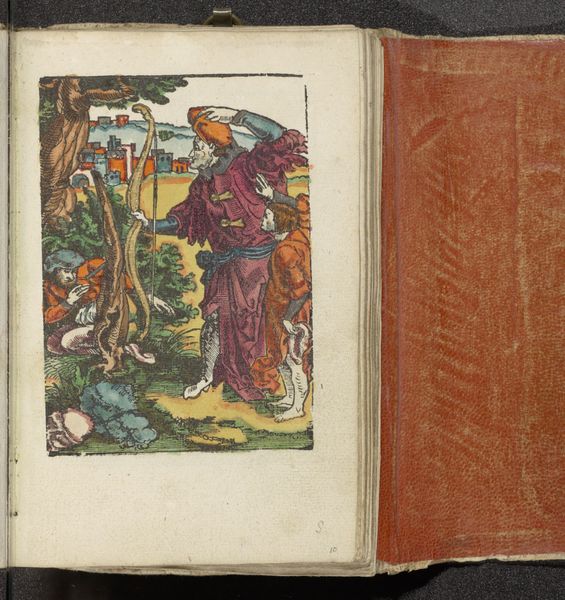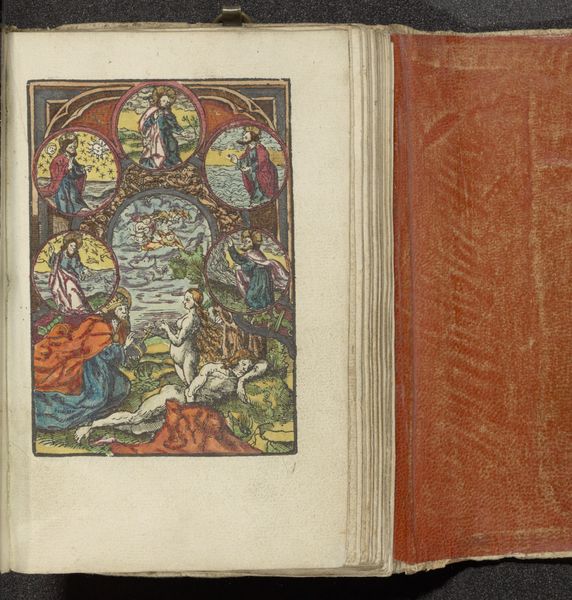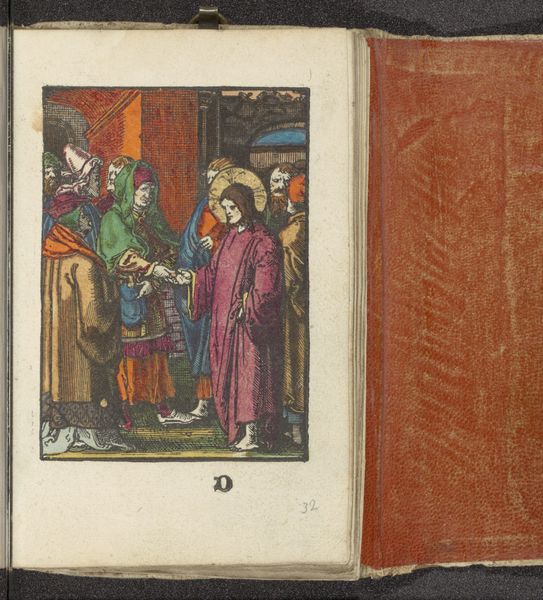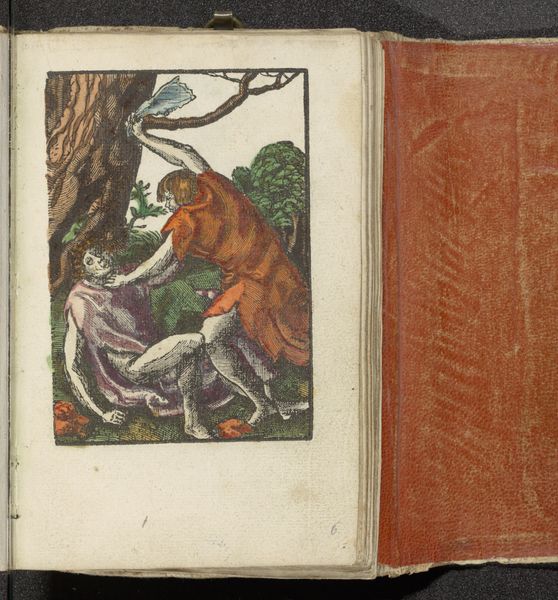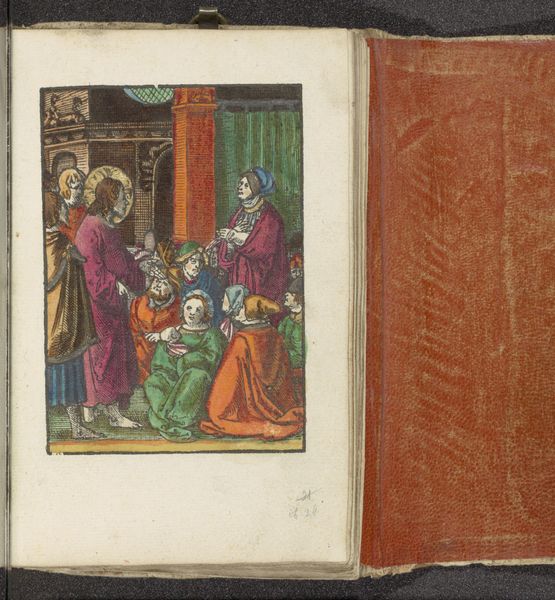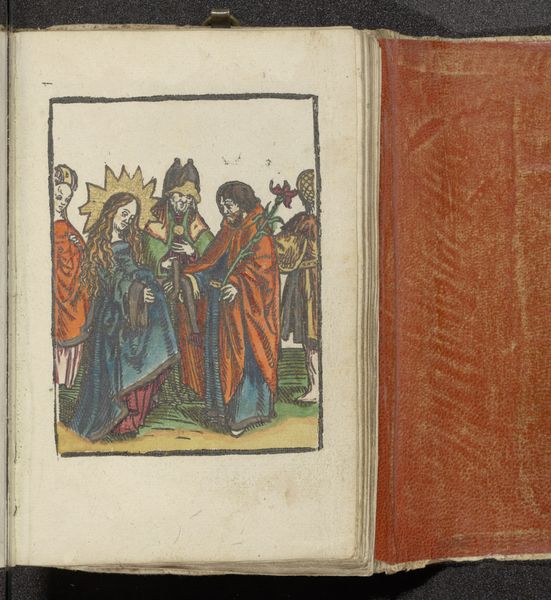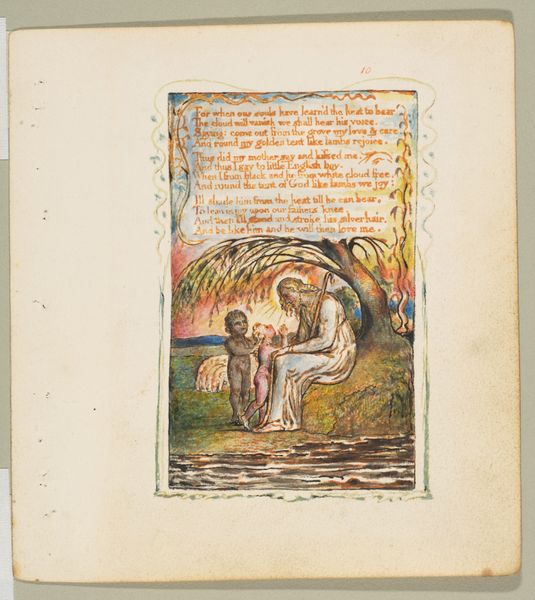
print, woodcut
#
narrative-art
# print
#
figuration
#
coloured pencil
#
woodcut
#
history-painting
#
northern-renaissance
Dimensions: height 110 mm, width 77 mm, height 159 mm, width 102 mm
Copyright: Rijks Museum: Open Domain
Editor: Here we have "God warns Adam and Eve," a woodcut made around 1530. It's so small and jewel-like. What really strikes me is how the figures are colored. What do you make of this work? Curator: Considering its creation within the Northern Renaissance, it's vital to examine its material conditions. A woodcut, being a relatively accessible form of printmaking, allowed for wider dissemination of images and ideas. Note the texture of the lines and the areas of color wash; these speak directly to the labor and processes involved. It’s not about illusionism, but about communicating through the very materiality of the medium. Editor: So the woodcut medium itself is a key element of the meaning? Curator: Precisely! Its creation speaks to both religious devotion and artisanal production of its era. Think about who was producing it, who was consuming it, and how this mass production was shifting religious culture. Were these printed pages meant for personal devotion, part of larger bound books? Editor: The fact that it is reproducible and available means it democratizes religious imagery to a degree. Were colourists specialised workshops separate to the printmakers? Curator: Yes! Considering that we’re looking at a coloured print, it also raises interesting questions of craft and specialisation. Different people or workshops may have been responsible for different aspects. And this manual colouring means no two prints are precisely the same. Editor: It does add a certain handcrafted value. What's special in Northern Renaissance woodcut that stands out, beyond a didactic function of the artwork. Curator: Think about the act of reproduction, the availability of the object, the nature of workshop practice. Look at how it functions as commodity for its audiences. This approach highlights the economic and social contexts interwoven within religious art. Editor: This really encourages me to dig deeper into the materials, workshops, and consumption. Curator: That’s the key! It gives us insight not only into what people saw but how they accessed visual and material culture in their daily lives.
Comments
No comments
Be the first to comment and join the conversation on the ultimate creative platform.
